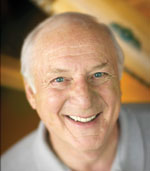Proficient Pilot
Times have changed
 A friend recently told me that her chapter of The Ninety-Nines was planning a visit to SoCal Approach, the FAA's air traffic control facility near San Diego that provides approach and departure control service for much of Southern California.
A friend recently told me that her chapter of The Ninety-Nines was planning a visit to SoCal Approach, the FAA's air traffic control facility near San Diego that provides approach and departure control service for much of Southern California.
“You can’t believe the blizzard of paperwork required to get permission for our visit. You’d think,” she said, “that we were trying to get into Fort Knox.”
Such bureaucratic demands are in stark contrast to the way it was one evening in 1955, some months after I had earned my private pilot certificate. I had driven to Santa Monica Municipal Airport for some night pattern work, but the crosswind had become too challenging. I decided instead to visit the control tower, a stilted wooden structure so frail that it had to be abandoned when the wind exceeded 25 mph (we didn’t use knots in those days). The only requirement for admission was climbing the steep, rickety ladder and knocking on the bottom of the door built into the floor of the tower cab. The controller, Frank Ganahl, tugged the door open and waved me in. I hauled myself up and handed him one of two cups of coffee I had picked up at a local coffee shop.
It was a quiet evening with hardly any traffic. After I began to get bored and thought about leaving, I heard over the tower’s loudspeaker—controllers did not use headsets in those days—a Stinson Voyager pilot calling in from over downtown Los Angeles and requesting a straight-in approach to Runway 21.
Ganahl continued sipping his coffee, ignoring the call. The pilot called again but got no response. “Aren’t you going to answer the guy?” I asked.
“Not me,” he said. “Why don’t you do it?” He handed me the microphone. I looked at the black object in my hand as if it were a live hand grenade.
“Go ahead. Tell him he’s cleared to land.”
For the next few hours and until Ganahl shut down the tower at 2100, mine was the only voice coming from the tower. Can you imagine something like that happening today?
Those were the days when we would take off from Santa Monica in a Cessna 140, make a climbing left turn, and enter the pattern at six-miles-distant Los Angeles International Airport (LAX). After landing, we would park at the airline terminal and then ask someone on the ramp when an airliner would need “our” gate. It was not unusual at such a time for me to be escorting an impressionable date to Mike Lyman’s Flight Deck on the second floor of the terminal for coffee and cake. (LAX was so pastoral then that jackrabbits lived along both runways and stood at attention in the weeds while watching airplanes take off and land.)
Nowadays, if a pilot taxis up to a terminal building that serves only one commuter flight per day and crosses an innocuous red line in the process, he could be arrested and perhaps lose his certificate.
Catalina Island has always been a popular destination for lightplane pilots. The preferred way to get there from Santa Monica in the 1950s was to make a left turn at the shoreline, descend to 100 feet over the surf, and “advise” the LAX control tower that you were crossing beneath their departure path. Do that today and you could be intercepted by a military fighter. Times have changed.
When I first pedaled onto Santa Monica Airport as a 13-year-old in 1951, I was mesmerized by the smell of avgas, the dancing of the windsock, and the purr of whirling propellers. Common sense kept me clear of the taxiway and runways as I rode my bike from one hangar to the next, hoping that one of the pilots readying his airplane for flight would ask me to go along.
The invitation never came, so I tried something more desperate. I would park my bike, walk to the edge of the taxiway, and wait for an airplane to approach. I would then make an animated hitchhiking gesture while wearing an imploring expression on my face. It took many attempts, but it finally happened. Ed Grant stopped his V-tail Bonanza, opened the door, and I climbed aboard. That was my first ride in a light airplane and the beginning of a lifelong obsession with flight.
Bicycles are not allowed on many airports today. Security fences and gates make it seem that no one is welcome, a sad state of affairs for visitors attracted to an airport by the romance and freedom promised by a pair of wings. Such security must be effective, though. I haven’t heard of a hijacking or bomb explosion at any general aviation airport since fences have gone up. All that is missing now is barbed wire and machine guns.
You don’t have to have begun flying in the 1950s to recognize the ongoing erosion of aviation’s liberty and the often needless regulatory burdens that suffocate those who fly, a condition that continues to worsen. We need to do something about that.
Visit the author’s website.


